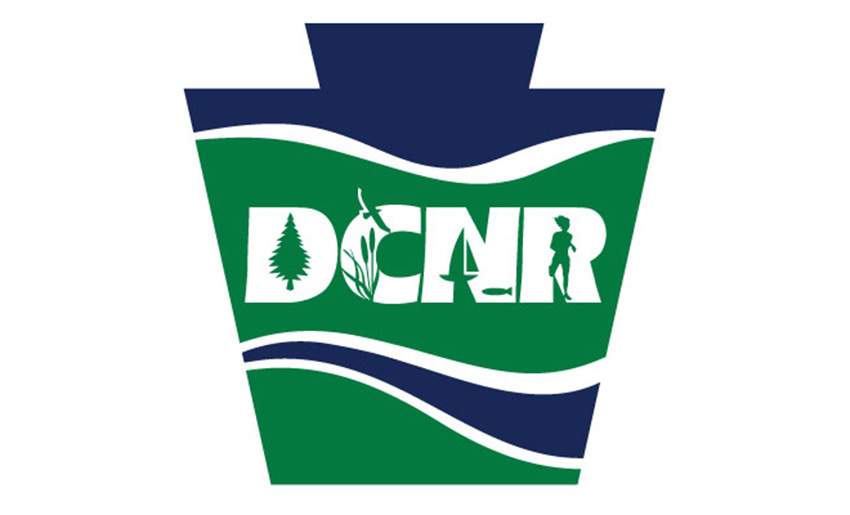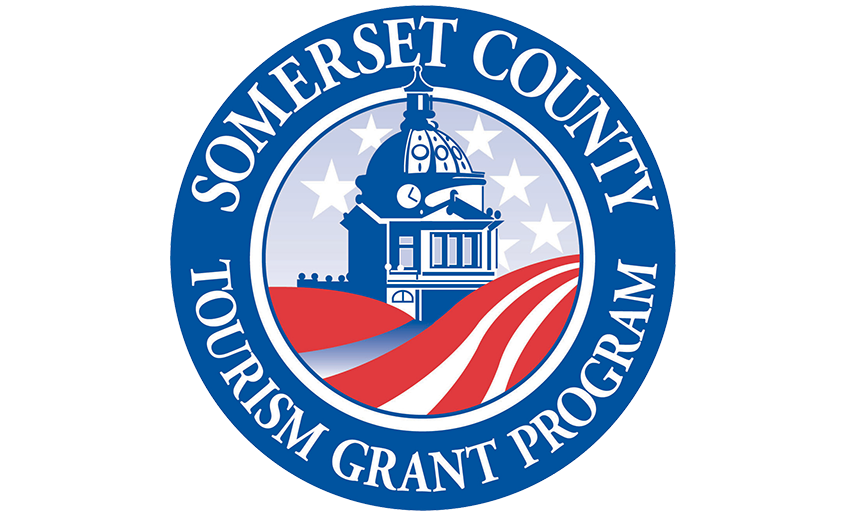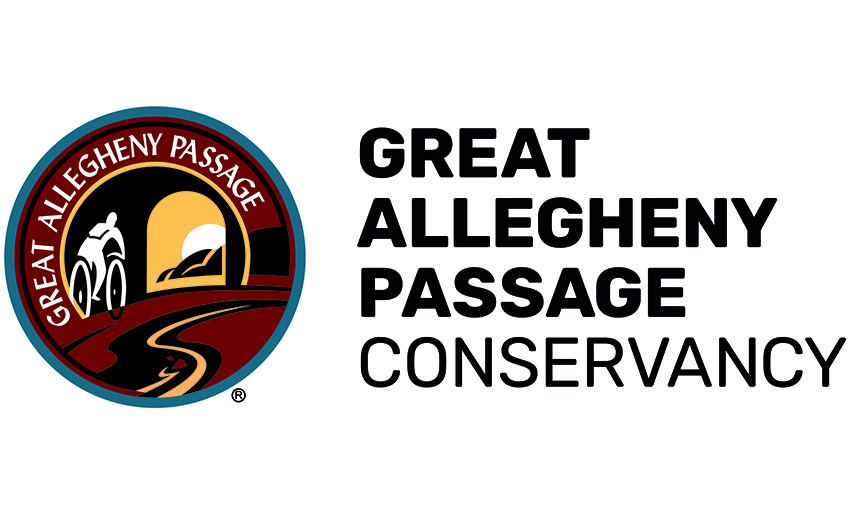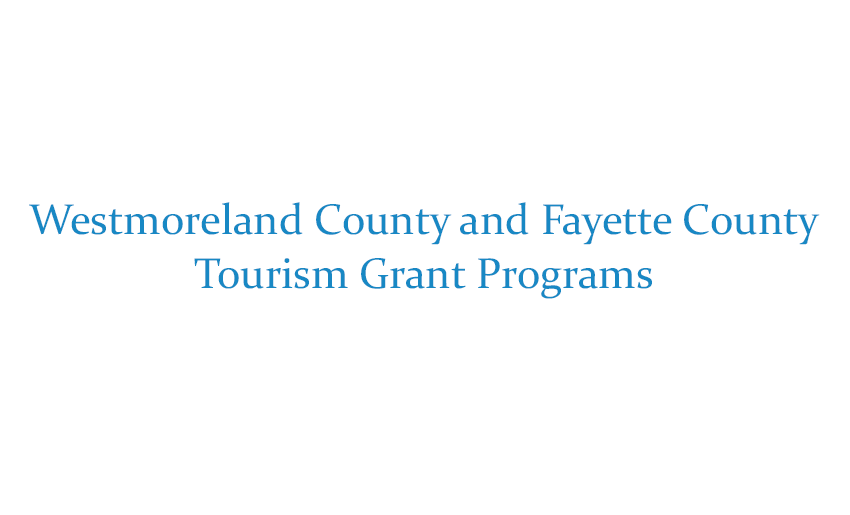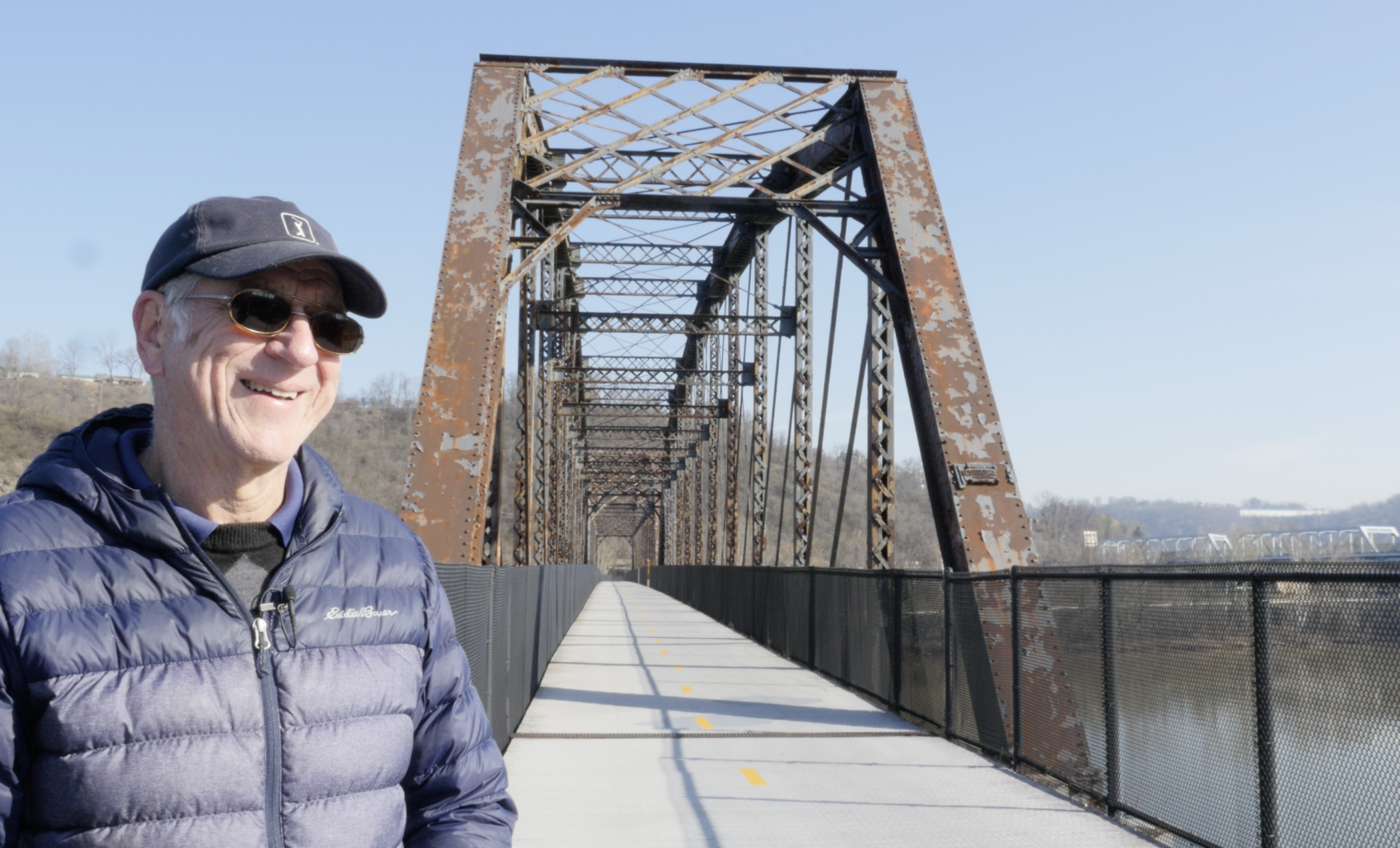“In 1970, while working in the National Tube Rolling Mill, I watched trains carry ingots across the Riverton Bridge from the Duquesne Steel Mill to the National Tube Works. And then 41 years later, I was able to ride my bike across that same bridge as a segment of the Great Allegheny Passage. Who would have ever thought that would be possible?”
“When I was born in 1949, the mills were booming. The Mon Valley was full of steel towns. They were all up and down the Monongahela River. Back then, the Riverton Bridge was called the Union Railroad Bridge. It connected the National Tube Company in McKeesport with Duquesne Steel Works across the river. The National Tube Works was the largest tube facility in the country at the time. The Carrie Furnace across the river made more steel than all of England during the war — tanks, boats, airplanes — most of that steel was coming out of Pittsburgh. The Monongahela River was once the busiest river in the United States. And they say the Mon Valley won World War II.
“I’m a third-generation steelworker. I worked at the National Tube Company during the summer when I was in college. I watched the trains bring ingots across this bridge into the rolling mill. It was an automated process. For a couple months I was the ‘cover boy.’ The cranes would pick up the ingots off the train cars and lower them into the pits, which were about 2,400 degrees. The guys that worked the pits would yell, ‘Hey cover boy!’ and I’d have to open the pits just long enough to get the ingots in or get the ingots out before they went into the rolling mill.
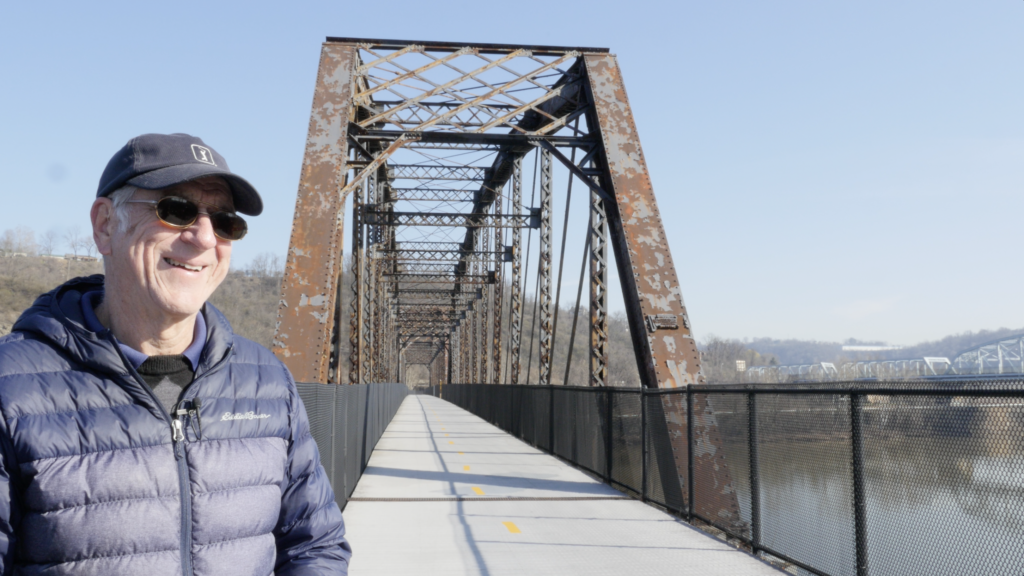
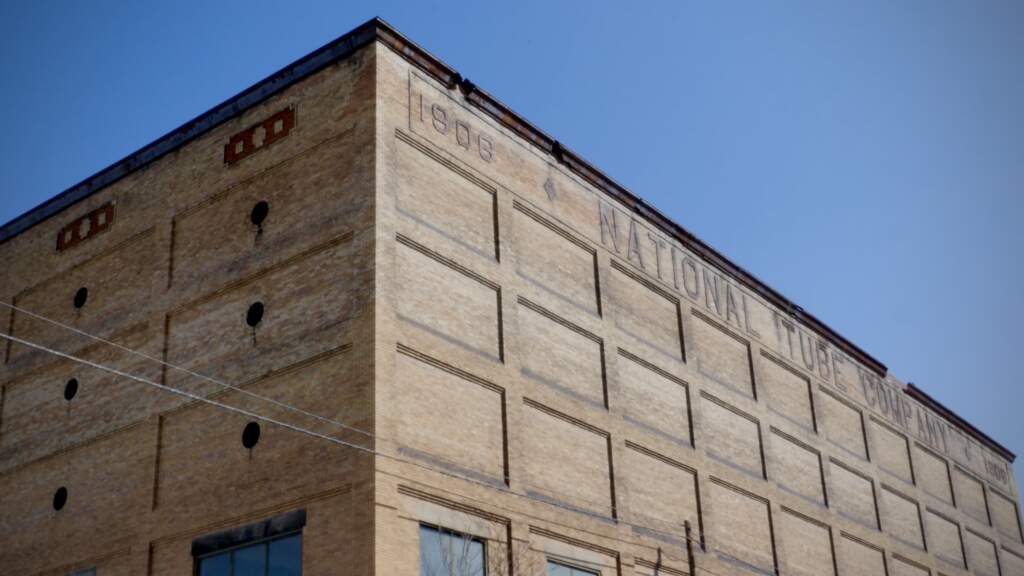
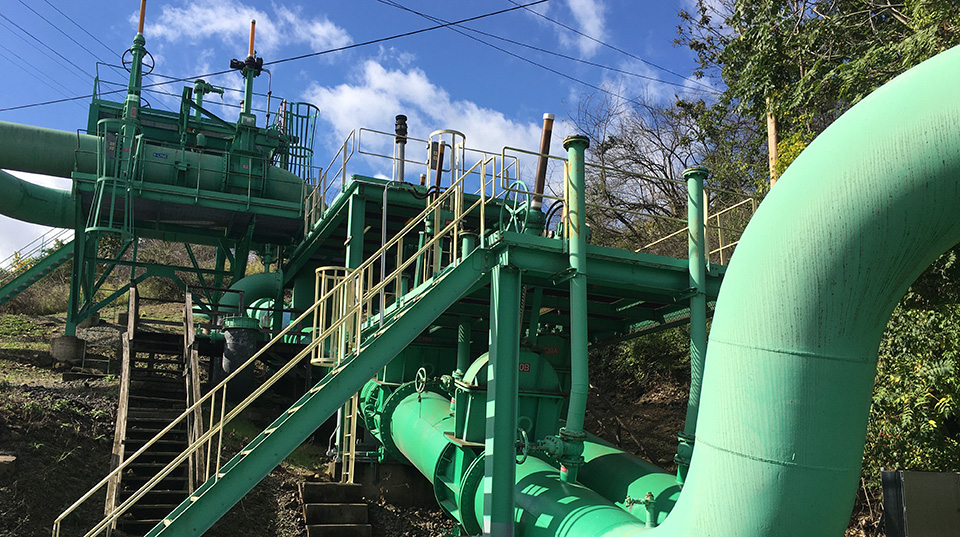
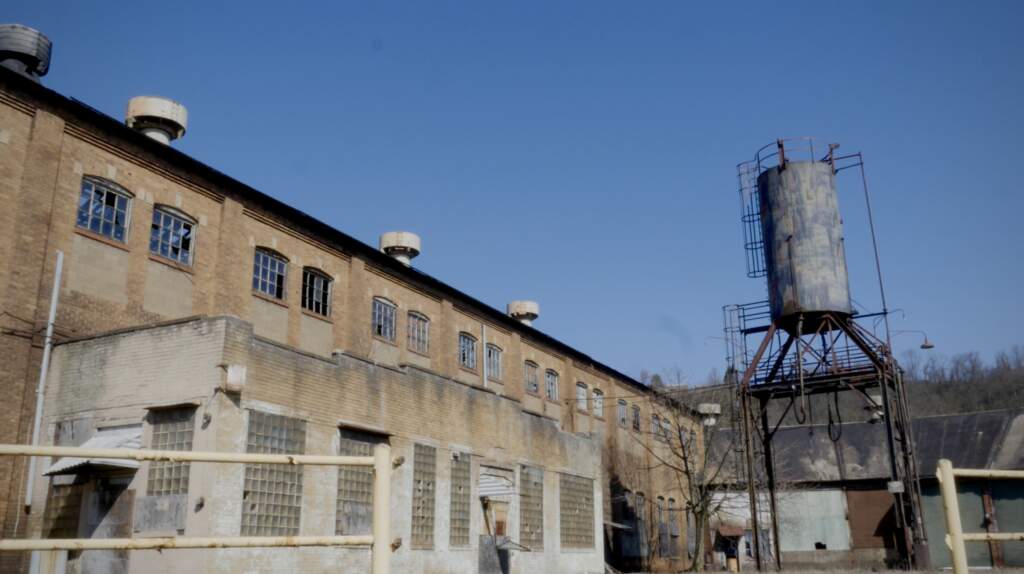

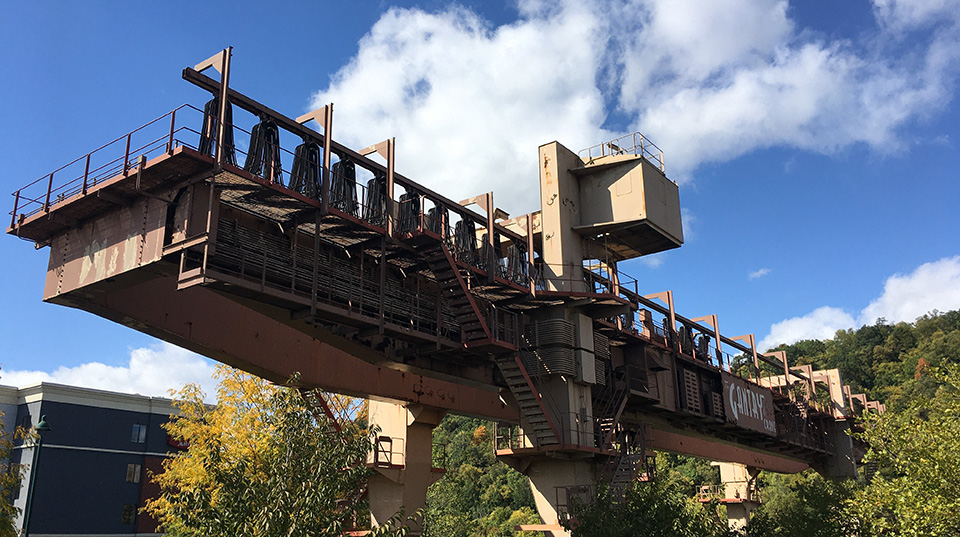
“Growing up in the Mon Valley the pollution in the river and air was terrible. The only fish in the river were catfish and carp. And nobody would catch a fish and then eat it. After the mills closed, it was an unbelievable change. Now we have the Hays bald eagles’ nest near Pittsburgh’s South Side. We have a couple osprey nests. That means there’s no shortage of fish in these rivers. There’s an ample supply.
“When people ride the Great Allegheny Passage, I hope they learn to appreciate why this trail is here. The railroads moved raw materials around from coal patch towns to Pittsburgh. In the Waterfront retail center on the GAP you can see the huge Gantry Crane. It’s massive. It’s probably 40 feet high. It used to run on rails and take things in and out of the train cars. There’s also a 12,000-ton press that was a stamper. It stamped steel that was being used to make battleships for World War II. They say that when the stamper came down and hit the steel, most of Homestead shook.
“I’ve biked my whole life. My grandmother bought me a 20-inch bike when I was in third grade. I loved it. When I got older my dad bought three bikes from a junkyard and cobbled together a bike that I would ride to school. We lived on a hill when I worked in the National Tube Works and I could almost coast the whole way to work. After I got married and had kids we’d drive to Ohiopyle to ride what’s now the Great Allegheny Passage. As the GAP got built closer and closer to the Mon Valley, we’d go to Boston to start. Then the GAP came all the way into Downtown Pittsburgh. Now I just get on my bike, ride a couple miles on the Great Allegheny Passage and enjoy one of the greatest bike trails in the country, if not the world.”
This content was created by Anita Harnish for the Great Allegheny Passage Conservancy and financed through grants from the Pennsylvania Department of Conservation and Natural Resources’ Bureau of Recreation and Conservation, through its Community Conservation Partnerships Program and Environmental Stewardship Fund, administered by Rivers of Steel Heritage Area and Pennsylvania Environmental Council’s Laurel Highlands Mini Grant Program; through funding via the Westmoreland, Fayette, and Somerset County Tourism Grant Programs; and with funds made available by the Great Allegheny Passage Conservancy.
